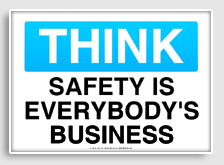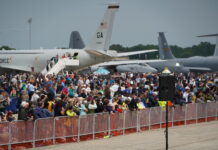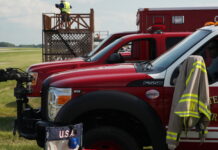Thanks largely to ICAS, the air show industry has made significant strides in improving the safety of our shows and our performers. But raise your hand if you think our industry is safe enough. No matter how safe we are, we all know we can and should do better. It starts by recognizing that safety belongs to each of us, whether we are a pilot, a volunteer in charge of parking or, like me, an announcer.
The chemical, petroleum, and nuclear industries, for example, face hazards every day and all have become safer because they focus time and energy to resolve safety issues. They all have safety programs and can enforce safety by making it a requirement of employment. Companies also share lessons learned with each other to help improve the safety of an entire industry. We do it too, but we have significant gaps that need to be bridged.
Many shows and many performers aren’t members of ICAS, so those with safety-related responsibilities are never exposed to ICAS information and don’t understand the pressing need to further the safety culture of the air show industry, yet their actions reflect on all of us. There is also a problem with some ICAS shows using home-grown air bosses who only do that one show a year and never attend a convention, never attend an air show safety seminar, and are unaware of the resources that are available from ICAS that will help make them better in their critical safety role. I’ve sat through safety briefings where the word safety is never mentioned.
As an announcer I’m responsible for providing safety information to my audience, but my safety starts first with me making sure I have a work area free of hazards and that I don’t do something that will result in my own injury. Only then can I do my job effectively. Pilots have their own particular safety responsibilities to themselves and the shows that hire them. And the shows must protect their performers as well as their audiences from undue hazards.
Any high-hazard industry will tell you that there is no single solution to enhancing safety. Rather, it is a multi-step process and there are several things we can do to improve the safety of our industry. First, regional organizations need to redouble their efforts to reach out and attract shows and performers in their area who are not members. As the founder of the regional concept, my motivation was to reach out to shows and performers that could not afford to go to the convention by developing affordable programs that would bring ICAS to them. The concept was to broaden the influence of ICAS on the entire air show industry, not just those with the most money.
There have been leaders in our industry who have advocated ICAS air shows only hiring ICAS pilots and they have encouraged ICAS pilots to fly only at ICAS air shows. But this extreme approach is neither appropriate nor necessary. Instead, all of us in ICAS should extend a helping hand to those outside our organization by showing them the benefits of being members. Not every show can afford to send someone to the convention, so they won’t join if all they can get for their money is the quarterly magazine and email industry updates. But they will attend regional meetings if we make them affordable, meaningful and accessible. We also have to make the effort to invite them.
ICAS itself needs to do more in its effort to drive safety down to the individual level. This can be done through greater support of regional meetings, through giving shows more and better tools and through adapting elements of safety programs of other industries where they make sense.
A popular approach in many high-hazard industries is known as ISMS, which stands for Integrated Safety Management System. It’s a simple but effective process. Before work can begin, ISMS requires those involved to define the scope of work to be performed, identify the hazards, develop controls for those hazards, and then perform the work. When the work is finished, any lessons learned are fed back into the next work evolution so any mistakes won’t be repeated.
Pilots have a much better opportunity for putting ISMS into practice because they fly nearly every day. For shows where a group of volunteers get together for a few days once a year, continuity is more difficult, but it can be achieved through development of written lessons learned after each show, a review of those lessons prior to doing the work, and a discussion with everyone involved to remind them of the hazards and the best way to mitigate those hazards prior to starting work.
Lastly, I would encourage ICAS to develop a column in the magazine and in Fast Facts called I Learned About Safety From That where members can share either lessons learned from mistakes or examples of mishaps they avoided through adequate planning. There are a lot of good safety stories out there and all of us would benefit from them.
If we are serious about safety, we must accept that safety belongs to all of us, but it also belongs to each of us. Own it!
ICAS member and air show announcer Mike Berriochoa is a past member of the ICAS Board of Directors, a frequent contributor to Air Shows Magazine, and a full-time public relations specialist working in the nuclear energy industry.








